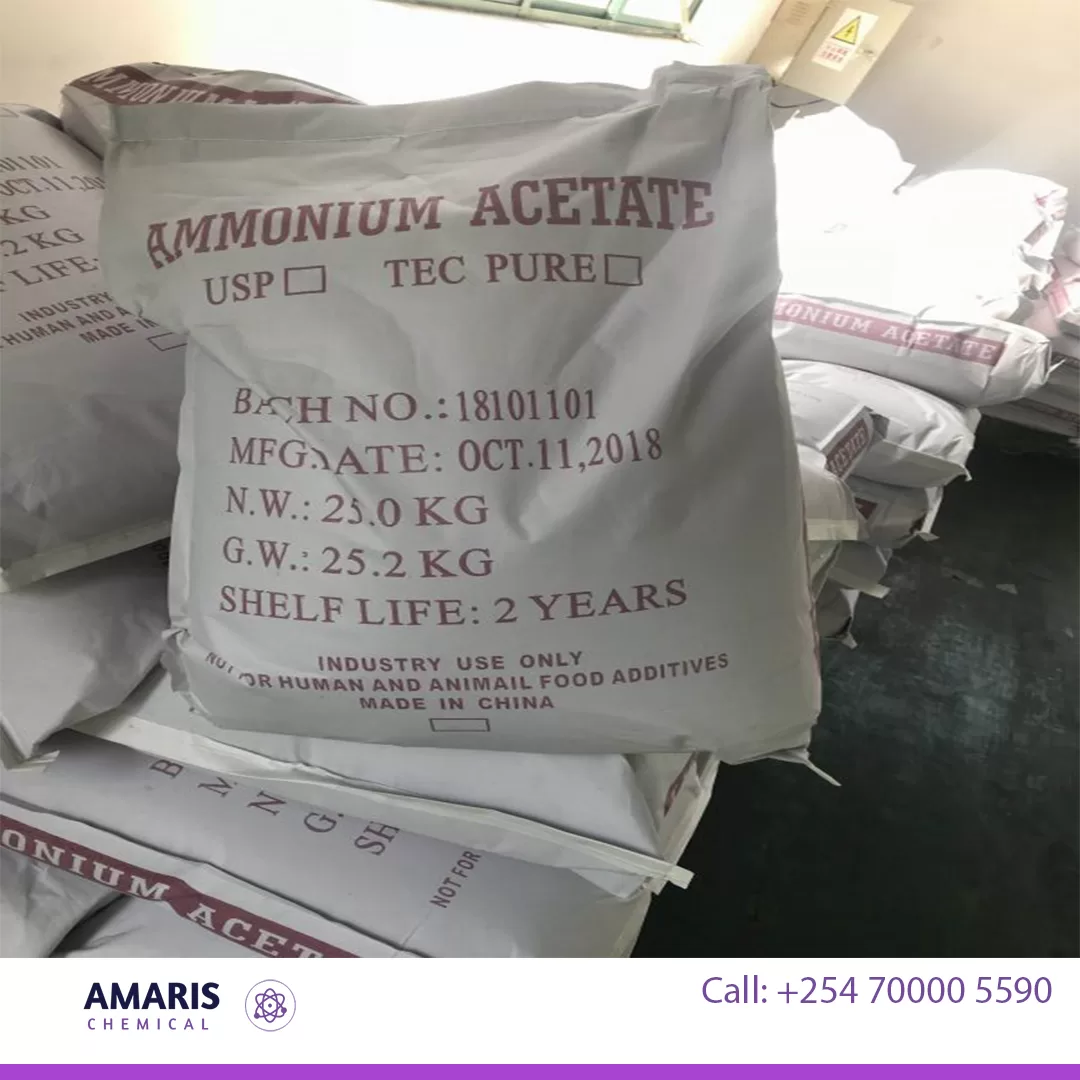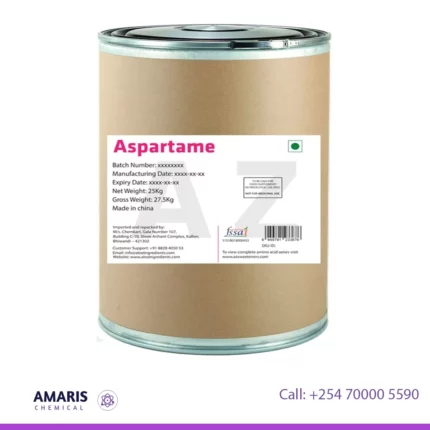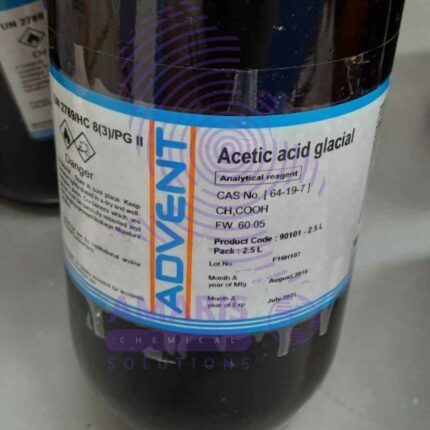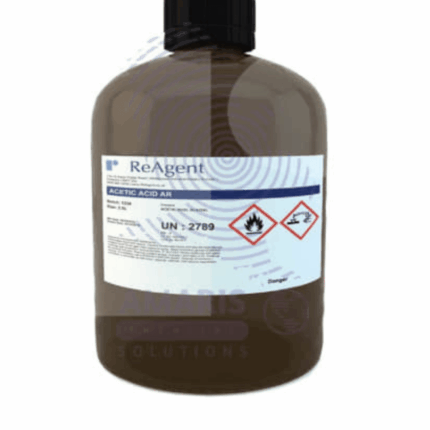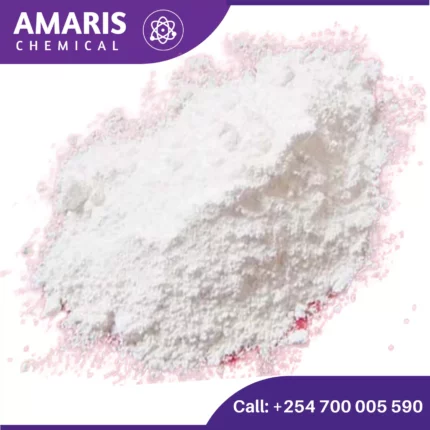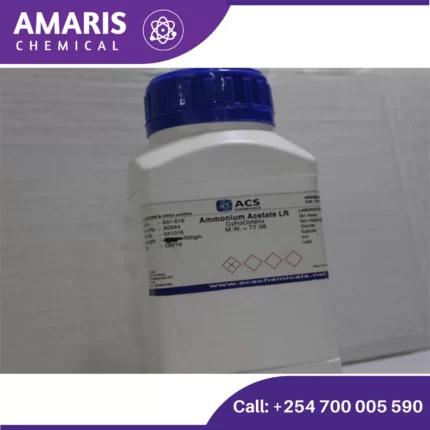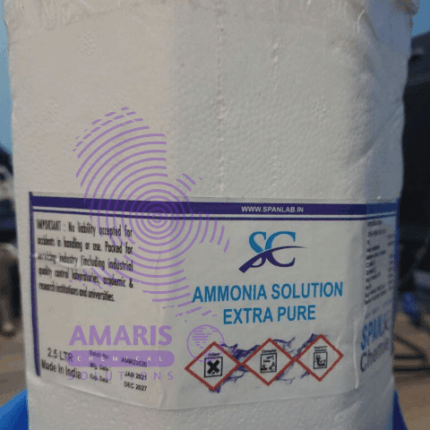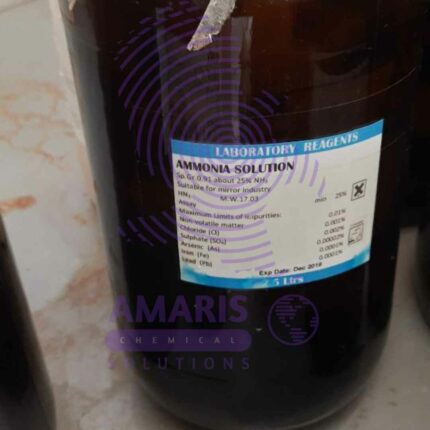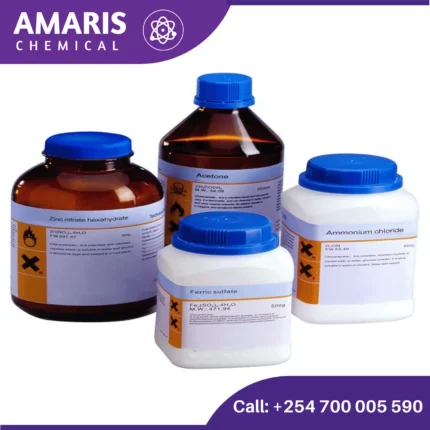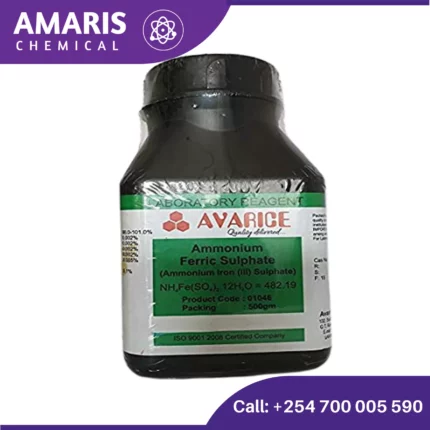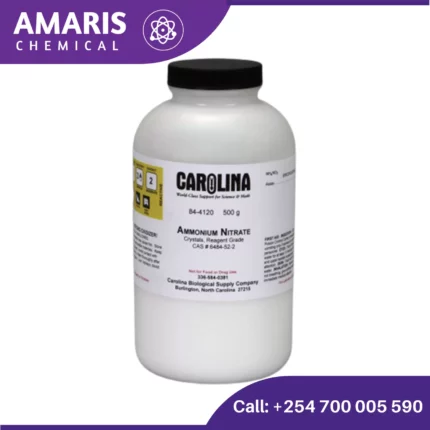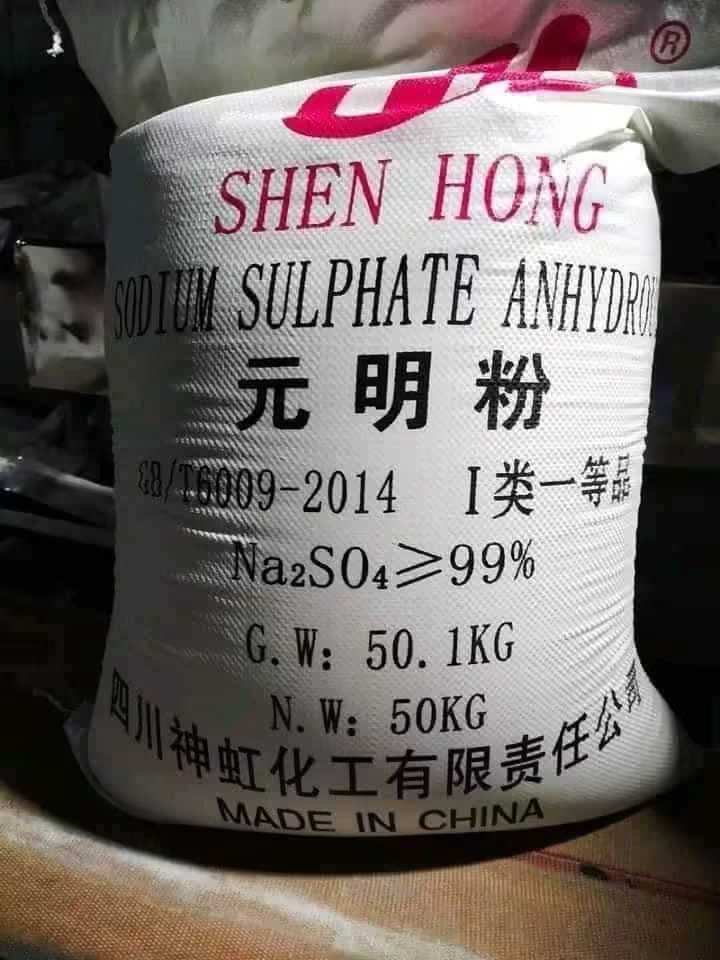“Aluminum Oxide 500 grams” has been added to your cart. View cart
Ammonium Acetate 25kgs
KSh8,500.00 Original price was: KSh8,500.00.KSh8,000.00Current price is: KSh8,000.00.
Ammonium acetate is a chemical compound with the formula NH4CH3CO2. It is a white, crystalline solid with a vinegar-like odor. It is commonly used in various laboratory applications, such as in molecular biology and analytical chemistry. It can act as a source of acetate ion in reactions and is often used as a buffer solution in biochemical and molecular biology research. Additionally, it is sometimes used in the manufacture of other chemicals and as a food additive.
SKU:
ACS98834CHEM0
Category: Analytical Reagents
Description
Ammonium acetate
- Buffer Solution: It is commonly used as a buffering agent in molecular biology and biochemistry experiments. Its buffering capacity is particularly useful in maintaining a stable pH environment, especially in the range of 3.8 to 5.8.
- LC-MS Solvent: Ammonium acetate is often used as a mobile phase additive in liquid chromatography coupled with mass spectrometry (LC-MS). It helps improve ionization efficiency and enhances the resolution of analytes.
- Chemical Synthesis: It serves as a source of acetate ions in organic synthesis. It can be employed in various reactions such as acetylation, amidation, esterification, and as a catalyst in some reactions.
- Desiccant: Due to its hygroscopic nature, it is used as a desiccant to dry organic solvents and other compounds.
- Food Additive: In the food industry, it is used as an acidity regulator, buffering agent, and flavoring agent. It is generally recognized as safe (GRAS) by regulatory authorities when used in food products within specified limits.
- Preservative: Ammonium acetate can be used as a preservative in certain food products, helping to extend shelf life by inhibiting microbial growth.
- Pharmaceuticals: It may be used in certain pharmaceutical formulations as an excipient or for pH adjustment purposes.
- Dyeing and Printing: In textile industries, it can be used in dyeing and printing processes as an acidic buffer.
- Electroplating: Ammonium acetate can be used in electroplating processes as an electrolyte.
- Laboratory Reagent: It is a common reagent in various laboratory procedures, including DNA/RNA extraction, protein precipitation, and chromatography.
Shipping & Delivery
Related products
Acetic Acid 2.5litre
Acetic acid is an organic acid with the chemical formula CH3COOH, also known as ethanoic acid. It is a colorless liquid with a pungent, sour taste and a distinctive vinegar-like odor. Acetic acid is an important industrial chemical used in the production of various products, including solvents, plastics, textiles, and food additives. It is also the main component of vinegar, which is commonly used as a condiment and preservative in cooking and food preparation.
Aluminum Hydroxide 250gm
Aluminium hydroxide is a chemical compound with the formula Al(OH)3. It is an inorganic compound that is commonly used as an antacid to neutralize excess stomach acid, as well as a component in the manufacture of various products, such as ceramics, paper, and cosmetics. It is a white, powdery substance that is insoluble in water and has a low toxicity. When heated, it decomposes to produce aluminium oxide, or alumina, which is used in the production of aluminium metal.
Ammonia Acetate
Ammonium acetate (NH4C2H3O2) is a chemical compound with various applications and properties. Here are some key points about it:
Properties
- Chemical Formula: NH4C2H3O2
- Molecular Weight: 77.08 g/mol
- Appearance: White, crystalline solid
- Solubility: Highly soluble in water
- Melting Point: Decomposes upon heating
Ammonia Solution 2.5litres
An ammonia solution is a solution of ammonia (NH3) gas dissolved in water. It is a clear, colorless liquid with a pungent odor and a basic pH. The concentration of ammonia in the solution can vary, and is typically expressed in terms of percent by weight or by volume.
Ammonia solutions are commonly used in a variety of applications, including cleaning agents, fertilizers, and as a precursor to other chemicals. They are also used in industrial processes such as refrigeration, gas purification, and water treatment. Ammonia solutions can be dangerous if not handled properly, as they are highly corrosive and can release toxic fumes if mixed with certain chemicals

